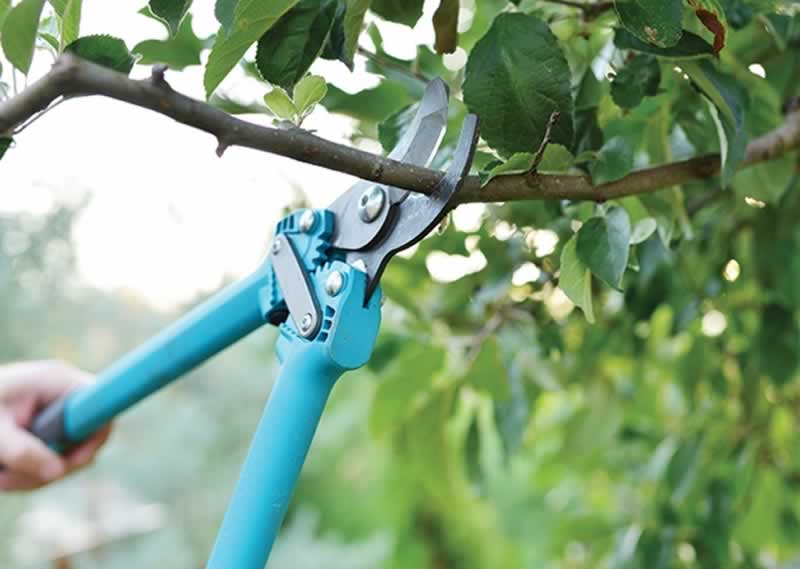Pruning and trimming are landscaping techniques that make yards look neat and beautiful. These methods will also help gardening enthusiasts pick up the leaves shed during dormant periods. By pruning, the trees have less chance of decay, death, and removal.
Regular pruning guarantees health and promotes the growth of your trees. The annual cut is just as efficient. Consulting an arborist is the best way to get into landscaping. However, if you want to do this task yourself, here is a complete guide on how to prune and prune your trees.
Need for pruning trees
All trees grow well enough without pruning, but when pruned they look better and are healthier. The advantages of pruning are:
- Pruning ensures plant health. The likelihood of pest infestation, decay and disease risk is lower. The tree also receives better light after pruning, which in turn promotes growth.
- Specific trimming and pruning methods promote fertility and flowering, and also help control the size of trees.
- It is not uncommon to prune trees as they endanger the safety of people and structures. If the branches are too tall and near power lines, the branches should be pruned. Low-growth branches also harbor security risks.
- In certain regions, plants are also pruned in preparation for hurricane season.
- Trees are also often pruned because they obstruct the view.
Ideal time for pruning and trimming
Most people prefer to prune from mid-winter to the end. This resting phase promotes growth as the temperature rises. Trimming after autumn makes it easier to identify the damaged limbs, while summer time is not suitable for pruning for most trees.
Ideal way to prune a tree
The right cut creates a strong tree structure. If a strong primary rest develops at a young age, the need for corrective action diminishes over time.
For smaller branches:
- As you shrink and shape the smaller branches and limbs, cut ¼ inch above the bud at a 45 degree angle.
- This will be the direction of new growth and prevent water damage and disease.
- It is not necessary to always use power tools for pruning.
For larger branches:
Larger branches are cut in three steps. This prevents damage to the bark.
- The first cut removes the weight from the branch. The best place for this cut is approximately 18 inches toward the bottom of the selected branch. Cut halfway through this link.
- The second cut is made on the top of the same branch. Make the cut an inch from the first cut. Chop gently until it loosens.
- The third and final step is to locate the branch collar. It's the swollen and rough part at the base of the branch. Make a 45 degree angle cut going away from the tree. Be careful not to leave any stumps.

Recommended cutting tools
Good equipment makes pruning a breeze. Some useful tools are:
- PowerGear2 Pruner is ideal for cutting branches ¾ inch thick. It has large handles that give a better grip.
- Power Tooth Softgrip Saw facilitates the removal of large branches thanks to the patented tooth construction.
- PowerGear2 Lopper Provides leverage when cutting medium-sized branches. It's optimal for branches 2 inches in diameter.
Popular cutting methods
Different types of cutting techniques are used to achieve different health, aesthetic, and safety levels.
- Removing dead, dying, or decaying parts to prevent infection from spreading to the healthier parts of the tree is called cleaning.
- dilution is a method of reducing the amount of leaves on a branch. This will lower the weight of the branch and increase the light and airflow through the plant.
- Removing the lower branches to make room for buildings, driveways and pedestrians is called raising.
- The reduction of large parts of the treetops for power lines is mentioned Covering. It is a harmful method and it damages the tree.
Tips and Tricks
- Pruning is a huge task that you need to do yourself. Make sure you know what you are doing so you don't harm your trees.
- Make sure you have the right equipment before starting the project. Most of the trimming and sectioning tools are readily available.
- Trees pruned from an early age give better results.
- If you are new to this gardening technique, start with fruit trees and ornamental plants.
- Have an arborist prune and cut your large trees.
Conclusion
Proper pruning and trimming increases the strength and attractiveness of the trees. If these techniques are used incorrectly, they will cause eternal damage to the trees and even lead to their death.




